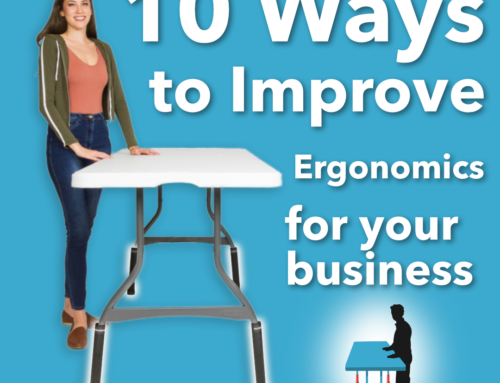While there are all kinds of ways that workers can be injured, issues from repetitive stress can often be the most difficult (and expensive) to resolve.
Why are these injuries so important to address?
Naturally we want to protect workers from all injuries! The idea is to have a zero-incident workplace. But it’s especially important to try to prevent lingering injuries from occurring.
Repetitive stress damages soft tissue such as ligaments and cartilage, not bone.
Broken bones heal quickly, and often end up stronger after the incident than they were before.
They can be put in a splint or cast, and may not need any further attention once the cast is off. A worker recovered from a broken bone is ready to get back to work pretty quickly.
By contrast, the body’s soft tissues take a longer time to heal. The damaged area generally ends up weaker than before the injury. They often need physical therapy, stretching, etc., for some time after the initial incident.
What’s the silver lining to these types of injuries?
Fortunately, engineering the workspace takes care of a lot of these issues. Best of all, you don’t necessarily have to purchase entirely new equipment.
Employees who stand to complete tasks should be able to stand straight. Folding tables tend to be too low for them to work without straining their backs. Using risers to lift them up to kitchen counter height solves this problem.
Shelves that are neither too high nor too low prevent workers from either crouching down or reaching up. Common supplies should also be placed within an easy arm’s distance to avoid reaching.
Those who use computers and/or sit to work should have their equipment ergonomically adjusted. The right posture – straight spine and neck, with lower back support – helps prevent neck and back strains too.
Keyboards and mice that allow wrists to be comfortably straight reduce carpal tunnel syndrome and similar issues.
You might have workers who prefer a desk that adjusts between sitting and standing. You’ll need surfaces that allow for a straight spine in either position.
Hefting items that are too heavy often leads to injuries, with 35 pounds the recommended limit. If loads are usually higher than this, handling them should be automated with forklifts, pulleys, or team lifts.
Summary
Repetitive stress injuries can take a long time and be difficult to heal. Prevention is key!
Fortunately many work areas can be re-engineered to accommodate workers’ needs better, and help them avoid these types of safety incidents.
Do you have any safety tips to share? Let me know in the comments!




